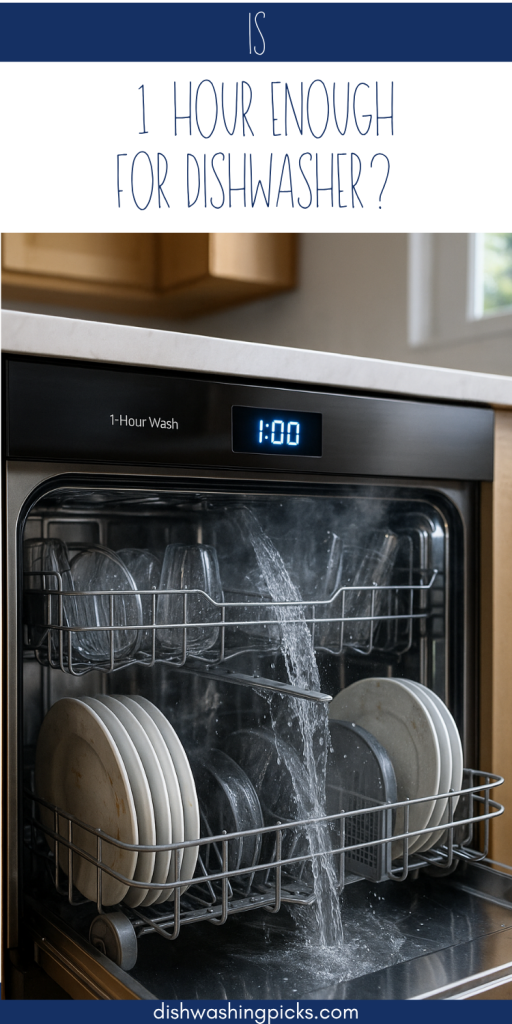
Let’s Be Honest — Who Has Time Anymore?
Ever stare at your dishwasher options and think, “One hour? Sounds perfect!” But then you pause and wonder… Is that really long enough to clean everything? You’re definitely not alone in that thought.
Quick wash, eco wash, intensive, auto, and then that magical 1-hour cycle—it’s like a menu with too many options, and all you want is clean dishes. Let’s break down what’s really going on behind that 1-hour promise.
What Actually Happens in a 1-Hour Dishwasher Cycle?
Alright, imagine this: you toss in your plates, some slightly crusty bowls from last night’s lasagna, maybe a mug with coffee stains. You hit “1 Hour,” and boom—you’re expecting a miracle in 60 minutes.
So, what’s in that hour?
Well, typically:
- Pre-rinse (super quick)
- Main wash (at a higher temperature)
- Quick rinse + dry (usually using a burst of heat or fan)
But here’s the catch: that cycle works best for lightly soiled dishes. Yep, it’s not designed for post-dinner-party messes or that casserole dish you forgot for two days.
Will Your Dishes Be Clean in Just 1 Hour?
If your plates just had toast crumbs or your cups only held water, the answer’s a big yes. In fact, it’s perfect for everyday light use. It’s fast, energy-efficient, and won’t leave you waiting all evening.
But if we’re talking baked-on cheese or greasy pans? Hmm… maybe not. The short cycle might not give detergent enough time to break down heavy grime, and the rinse may miss spots.
Here’s a quick way to think about it:
- Lightly dirty? Go for it.
- Heavy grime or dried food? Use a longer/intensive cycle.
The Dishwasher’s Hidden Balancing Act
Think of your dishwasher like a mini car wash with a brain. It balances:
- Water temperature
- Spray power
- Detergent action
- Drying time
When you cut that time to 1 hour, something has to give—usually the depth of soaking and scrubbing time.
Some dishwashers now have “SpeedBoost” or “Quick+” options that increase spray intensity or heat to make shorter cycles more effective. But not all models are that fancy.
So yeah, one hour can be enough—but only when you and your dishwasher are on the same page about the workload.
A Few Real-Life Examples (Because We’ve All Been There)
Scenario 1:
You had cereal for breakfast, coffee for lunch, and a sandwich for dinner.
1-Hour cycle? Absolutely. You’ll be golden.
Scenario 2:
Family taco night. Cheese, salsa, sticky plates, and a blender full of guac residue.
Skip the 1-hour. Use heavy-duty or “Auto” mode.
Scenario 3:
Hosting guests. Glassware, cutlery, dessert plates.
1-Hour might work if you rinse before loading and don’t overload it.
So… Should You Use the 1-Hour Cycle or Not?
Let’s wrap it up simply.
Use the 1-hour cycle when:
- Dishes are lightly soiled
- You need them clean fast
- You’re running smaller loads
Avoid the 1-hour cycle when:
- Dishes have dried-on food
- You’re washing pots and pans
- It’s been that kind of meal
It’s Not Just About Time — It’s About Timing
Here’s a little mindset shift: don’t think of 1 hour as “too short” or “not enough.” Think of it as the express train—awesome for short trips, not ideal for a cross-country haul.
So next time you’re loading your dishwasher and eyeing that tempting 60-minute button, just ask yourself:
“Are these dishes 1-hour worthy?”
Chances are, you already know the answer.
